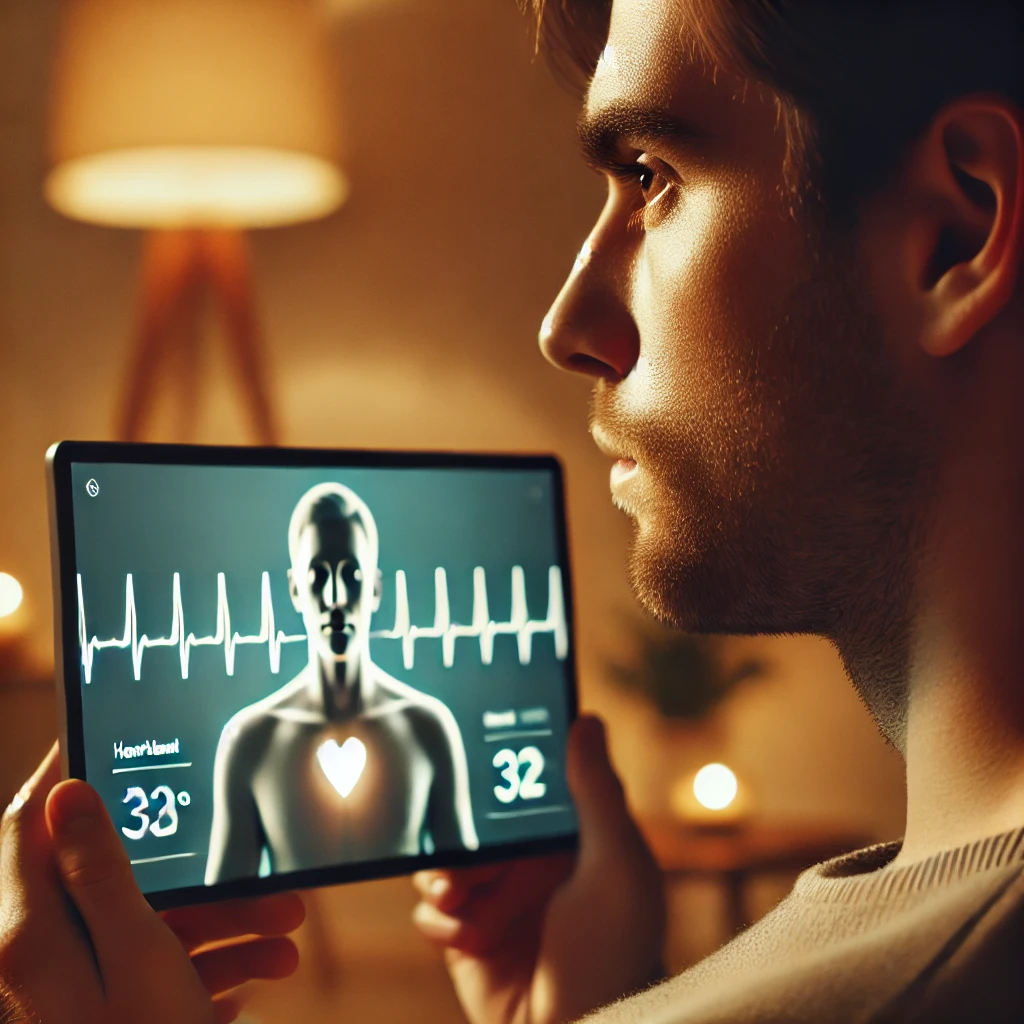Harnessing Biofeedback Therapy: Master Your Mind and Mood
Understanding Biofeedback Therapy
Biofeedback therapy is a therapeutic approach that leverages electronic monitoring devices to provide real-time data related to physiological functions. This innovative method allows individuals to gain awareness and control over specific bodily processes that are typically involuntary, such as heart rate, muscle tension, and brain activity. The concept originated in the 1960s when researchers explored ways to enhance physical and mental health outcomes through feedback mechanisms. Over the years, biofeedback has evolved to encompass various techniques, each tailored to address different health concerns.
One prominent type of biofeedback is Electromyography (EMG), which measures muscle tension and electrical activity. EMG biofeedback is particularly beneficial for individuals dealing with conditions such as chronic pain or tension headaches. Another well-known modality is Electroencephalography (EEG) biofeedback, which focuses on brainwave activity to improve cognitive functions and emotional regulation. This type of biofeedback is often utilized in treating attention deficit hyperactivity disorder (ADHD) and anxiety disorders.
Heart rate variability (HRV) biofeedback is another effective technique that assesses the variations in time intervals between heartbeats. It is recognized for its role in helping individuals manage stress and promote emotional resilience. By utilizing specialized equipment, biofeedback therapy translates these physiological signals into understandable information, allowing individuals to visualize their internal processes and respond appropriately. For instance, when an individual learns to recognize signs of stress through heart rate fluctuations, they can employ relaxation techniques to mitigate anxiety effectively.
This foundational understanding of biofeedback therapy is essential as it underscores its broader applications in controlling mind and mood. The different types of biofeedback serve as powerful tools, enabling individuals to cultivate a heightened sense of self-awareness and, ultimately, influence their overall well-being.
The Science Behind Biofeedback: How It Works
Biofeedback therapy is grounded in the principles of neurophysiology and emphasizes the interconnectedness of the mind and body. To comprehend how biofeedback functions, it is essential to examine the physiological processes involved, particularly the roles of the central nervous system (CNS) and the autonomic responses of the body. Through biofeedback, individuals gain access to real-time data about their physiological states, enabling them to cultivate self-awareness and self-regulation.
At its core, biofeedback therapy operates by measuring bodily functions such as heart rate, muscle tension, and skin temperature. These measurements are collected using specialized sensors that monitor physiological signals, which are then relayed to the user through visual or auditory cues. The information provided by these tools allows individuals to see how their mental states directly influence their physical responses, thus fostering a greater understanding of their own stress and relaxation levels.
The central nervous system plays a pivotal role in mediating our physiological responses. It regulates involuntary functions, including heart rhythms and blood pressure, often in response to stressors. Biofeedback encourages individuals to engage with their autonomic nervous system, which is responsible for managing these involuntary processes. For instance, by learning to control heart rate variability through breathing techniques or mindfulness practices, one can influence their emotional state and enhance overall mental health.
The technology that underpins biofeedback therapy continues to evolve, with advancements in sensors and software enhancing the accuracy and efficacy of data collection. Modern biofeedback devices can provide immediate feedback, allowing users to adjust their responses in real-time. This interactive relationship between user and technology not only aids in the management of stress and anxiety but also contributes to improved emotional resilience, making biofeedback a valuable tool for mastering one’s mind and mood.
Applications of Biofeedback Therapy in Daily Life
Biofeedback therapy has emerged as a transformative tool widely applicable in everyday life, enabling individuals to harness their physiological responses, leading to improved mental health and emotional regulation. Through various techniques, such as electroencephalography (EEG) and heart rate variability (HRV) monitoring, practitioners empower clients to develop a heightened awareness of their bodily functions. This awareness can be particularly beneficial in managing common concerns such as stress, anxiety, and chronic pain.
For instance, consider a college student experiencing immense pressure from academic requirements. By using biofeedback techniques, the student can learn to control physiological responses, such as heart rate and muscle tension during challenging situations. This self-regulation leads to a reduction in anxiety, fostering more effective study habits and overall improved academic performance. The ability to utilize biofeedback in high-stress scenarios not only enhances resilience but also promotes effective coping strategies.
Furthermore, biofeedback therapy has made considerable inroads in chronic pain management. Individuals with conditions like fibromyalgia or migraines can utilize biofeedback to understand their pain triggers better and develop strategies to reduce discomfort. One may recount a case study of a patient who, after several sessions of biofeedback, reported a significant decrease in pain levels and an enhanced ability to engage in daily activities, highlighting the therapy’s practical utility in improving quality of life.
In the realm of sports, many athletes are now incorporating biofeedback into their training regimens. By learning to control stress responses and optimize focus, athletes enhance their performance during competitions. For instance, a seasoned runner might utilize biofeedback to monitor and adjust their heart rate, ensuring they remain within an optimal range to maximize endurance and efficiency. Overall, the diverse applications of biofeedback therapy underline its importance as an essential resource for managing emotional health and enhancing performance across multiple domains.
Getting Started with Biofeedback Therapy
Beginning your journey with biofeedback therapy can be a transformative experience for your mental well-being. The first step is to identify qualified practitioners who specialize in biofeedback. It is essential to seek professionals who are accredited and have a solid understanding of the techniques involved. You may find biofeedback therapists in various settings, including private practices, wellness centers, and even some healthcare facilities. Websites that focus on mental health services often have directories to help you locate practitioners in your area. Alternatively, numerous biofeedback devices are available for home use, which can be suitable for individuals who prefer a more private approach to therapy.
When attending a biofeedback session, you can expect a welcoming atmosphere where you will discuss your mental health goals. Practitioners often employ various techniques, such as electromyography (EMG), electroencephalography (EEG), or heart rate variability (HRV) monitoring, to provide insights into your physiological functions. Sessions typically last between 30 and 60 minutes, depending on the specific techniques and the progress made. During this time, you will learn to regulate emotional responses by becoming more aware of your body’s signals and how they correlate to your mental state.
Regarding expected outcomes, biofeedback therapy can help with anxiety, stress management, and overall emotional regulation. Many clients report feeling a substantial reduction in stress levels and an improved ability to cope with challenging situations. However, it is important to have a realistic understanding of biofeedback’s potential. Misconceptions abound, such as the belief that biofeedback is a quick-fix solution or that it replaces traditional medical treatments. Instead, think of biofeedback as a complementary approach that, when integrated thoughtfully into your life, can significantly enhance your mental health. Always consider your individual needs when exploring this innovative therapy.






